dutch design by KAAN Architecten to arrive in belgium
Dutch studio KAAN Architecten takes to the Flemish Valley near Ghent, Belgium, to design a sustainable new expansion for the De Prijkels business park, which is currently home to over sixty businesses. Developing an entrance for this collection of workspaces, KAAN Architecten has collaborated with developer Steenoven, contractor Alheembouw, DENC-studio, DELVA Landscape Architects, and artist Paul de Kort to design Poort van de Prijkels. Once built, the project will take shape an ensemble of three buildings located in Karrewegstraat, Deinze.
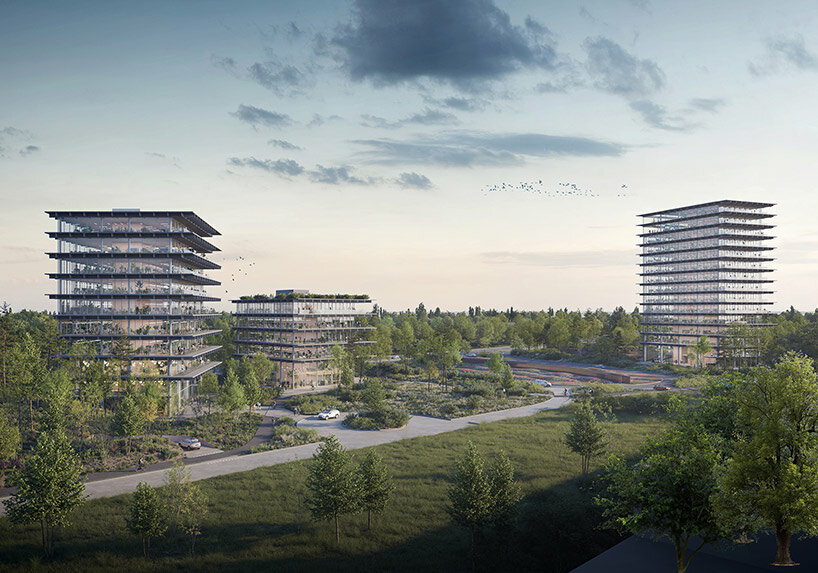 images © Vivid Vision | @3dvividvision
images © Vivid Vision | @3dvividvision
Integration with the Historical Landscape
Designing the master plan of the Poort project, the team at KAAN Architecten works with local architects DENC-STUDIO to carefully consider the historical significance of the surrounding landscape. The intention is to revive the Flemish Valley, depicted in old maps as a mosaic of agricultural fields and wooded lots. Central to the project is the captivating land art installation called Het Karrenspoor, created by Paul de Kort. This installation brings back to life the elliptical tracks of the historic cart road within a field, resembling the shape of wheat. The tracks are meticulously maintained through regular mowing, and a path runs through the field, bordered by latticed screens that provide dynamic views reminiscent of wheel spokes.
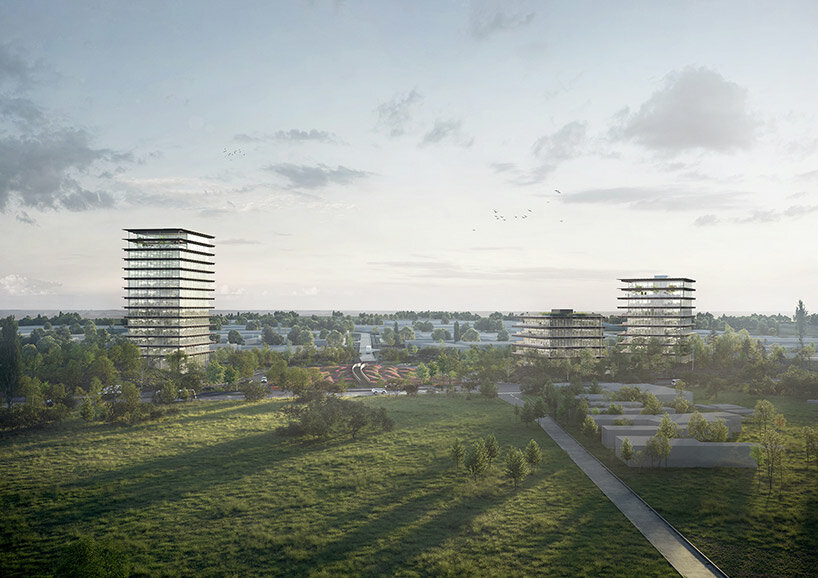
transparent Design with Sustainability in Mind
In contrast to conventional closed-box industrial buildings, the Poort ensemble stands out with its predominantly transparent design. The buildings boast floor-to-ceiling glass facades and wooden galleries along their perimeter, offering exceptional viewpoints to observe the ever-changing colors of the surrounding landscape throughout the seasons. Dark-stained oak cantilevers extend further on the sun-facing sides, serving as both terraces and structural sun protection.
Solar control glazing effectively manages heat gain and optimizes natural light, while slender columns and central circulation cores ensure unobstructed views on all floors and allow for future adaptability. The structure’s high thermal inertia contributes to temperature regulation. The ground floors feature spacious double-height halls that facilitate interaction among occupants through open sight-lines and interconnected spaces, serving as meeting areas and entry points.
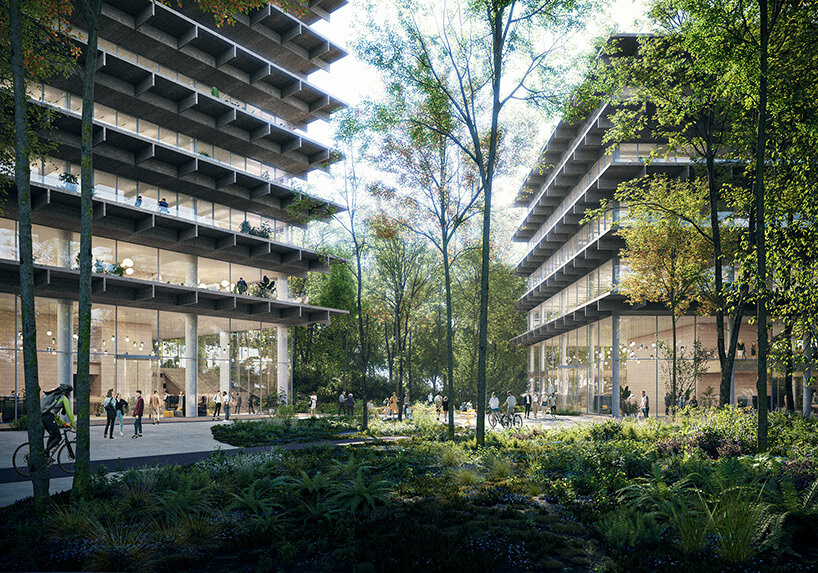
kaan architecten aims to Enhance Employee Well-being
The new buildings have been thoughtfully designed to cater to the needs of businesses within the estate, offering various office facilities and employee amenities such as child daycare, a bank, a fitness center, and other commercial services. Each building incorporates underground parking facilities on two levels, utilizing excavated earth to create adjacent slopes adorned with natural greenery, including diverse trees and shrubs that enhance the area’s landscape. This lush greenery not only promotes the well-being of employees but also acts as a natural carbon sink, absorbing nearly 16.5 tons of CO2 annually.
The project employs ground heat exchangers, utilizing soil as temporary energy storage. Additionally, the roofs are equipped with photovoltaic installations to generate renewable electricity and enable greywater recovery. Runoff is effectively managed through the integration of above-ground bio-retention systems known as wadis, contributing to ecological balance and efficient water usage.
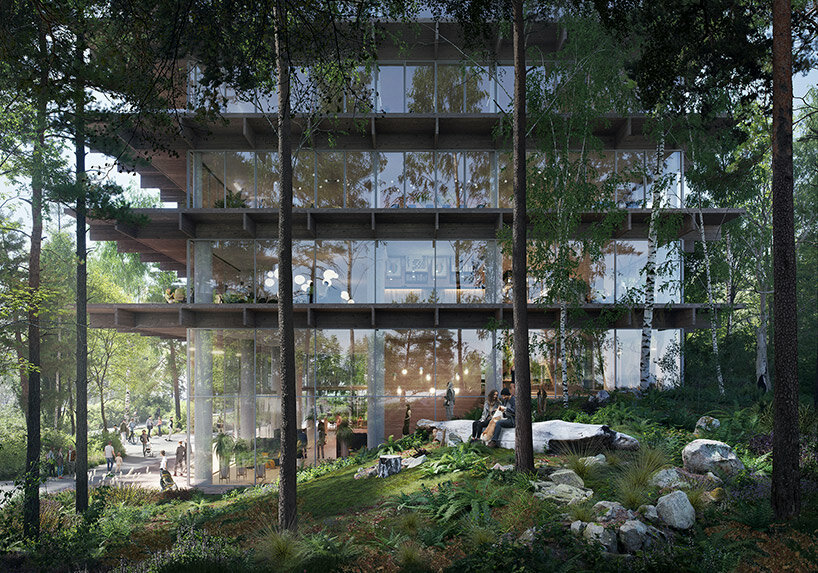
Poort van de Prijkels not only transforms an ordinary intersection into a welcoming zone but also ensures continued access to the business estate. The project prioritizes the use of renewable resources, minimizes energy requirements, and employs rational management of surplus demands, resulting in a BREEAM Excellent score. With their height and functionality, the buildings create a distinctive entrance area while preserving the serene pastoral environment, complete with dedicated green paths for pedestrians and cyclists.
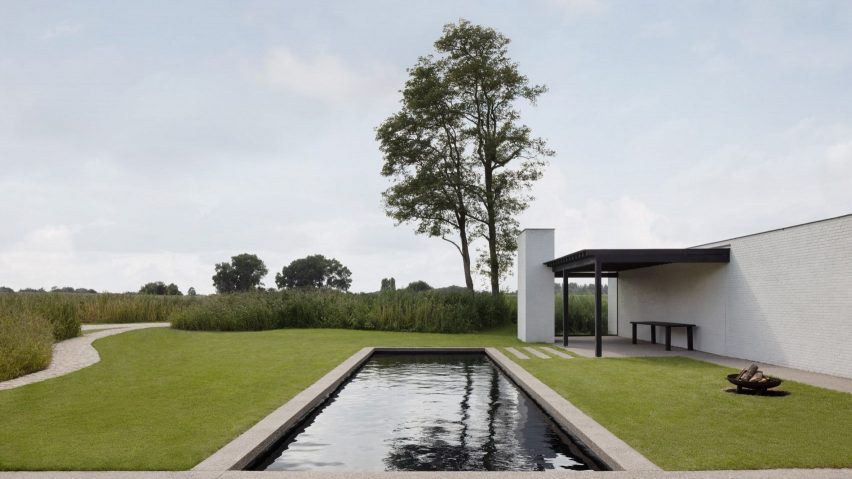
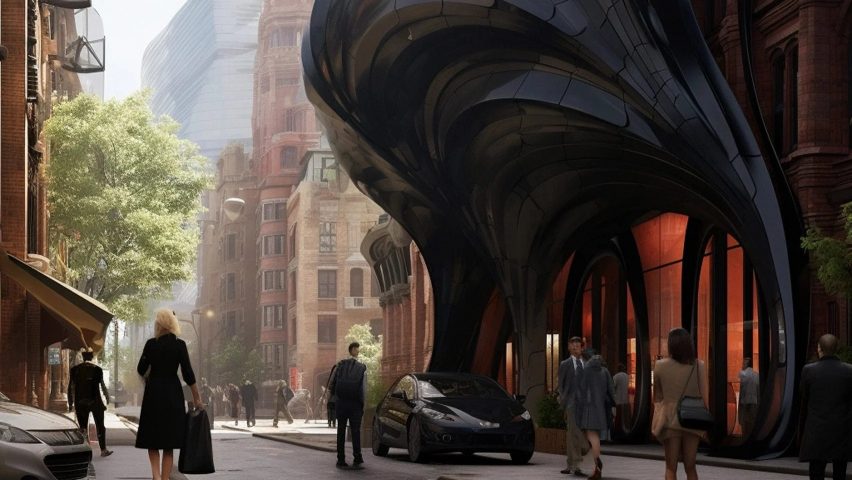


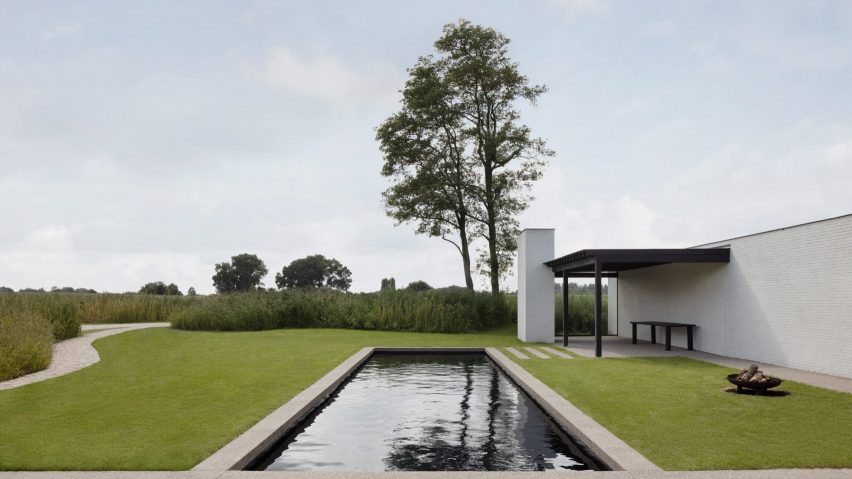

 images ©
images © 

